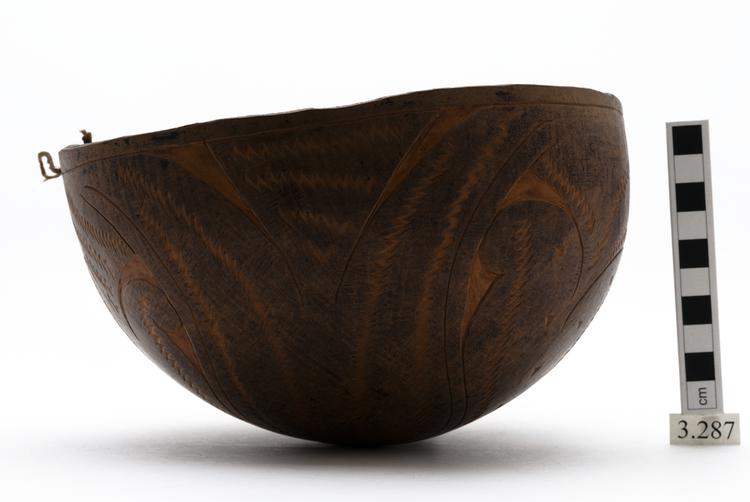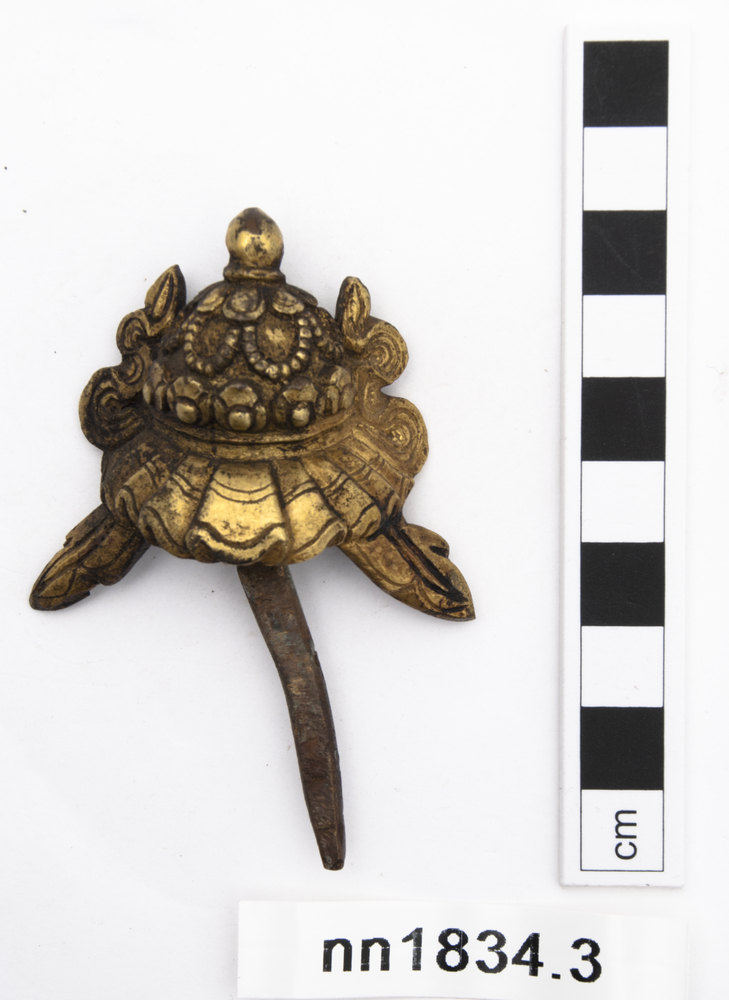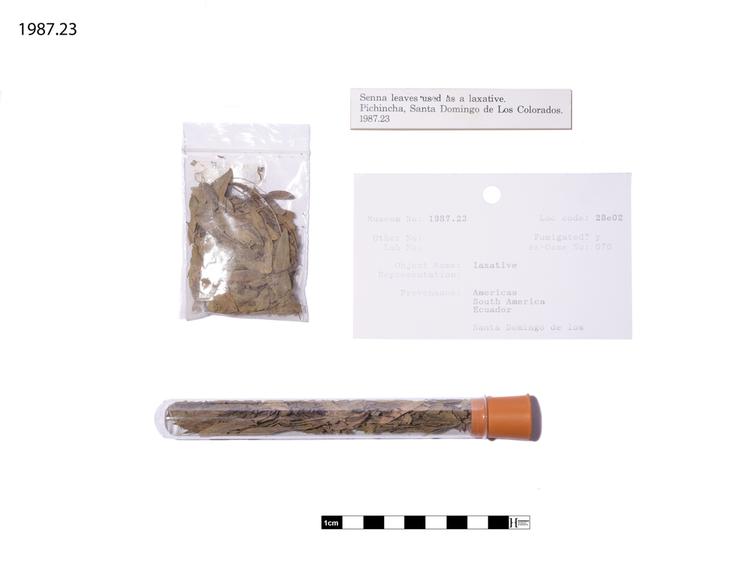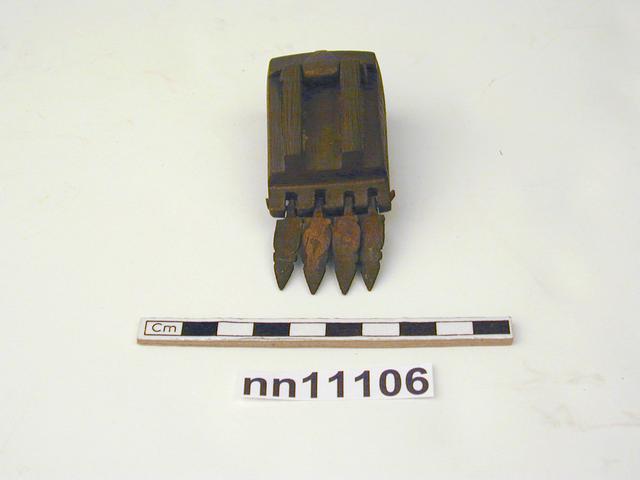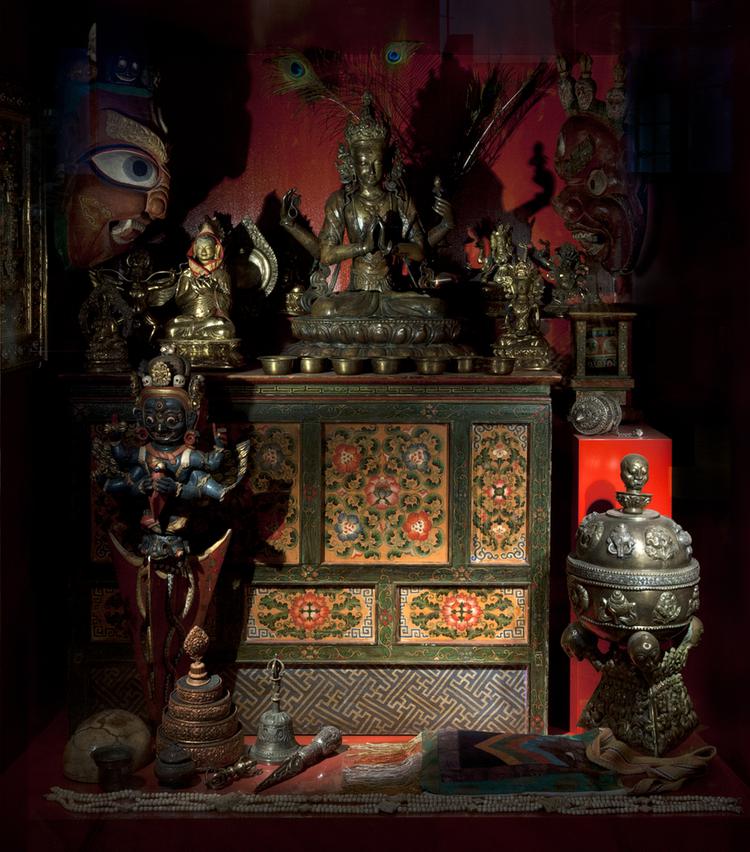
Bone girdle consisting of four strings of pearls and decorated bone plaques. The strings of pearls are crossed and held together across four strings by two larger diamond-shaped bone plaques and across two strings by two medium-sized bone plaques and ten small bone plaques, sequenced symmetrically: small, small, large, small, medium, small, large, small, small. The carving on the two large diamond-shaped plaques shows the crossed dorje and the lotus design while the two medium-sized plaques depict the symbol of the vase. Medium and large bone plaques are slightly curved, retaining the original shape of the bone. 1100 mm x 90 mm x 35 mm.
Bone aprons, crowns and armlets are worn by tantric practitioners for important rituals such as tantric initiation rituals to invoke fierce deities Bone ornaments associated with male yidam deities and female dakinis (often depicted in bone aprons) are worn also as part of the ritual costume used in Tibetan sacred dances (cham) which are performed during major festivals. Representations of fierce deities in sculptures or paintings often show the deity wearing bone ornaments. Symbolic: The union of dorje (means, masculine) and lotus (wisdom, female) as depicted on the plaques symbolizes the supreme truth. The vase is symbolic of longevity. Bone belts represent the perfection of effort or energy. (see Beer Encyclopedia of Tibetan symbols and motifs p318)



